Archive for the ‘Social Media Marketing’ Category
Description of ‘Social Media Marketing’ Category:
Articles about Social Media Marketing which is a method of attracting unique visitors to website content by posting on Social Media websites.
Friday, November 18th, 2011
If you use Twitter, by now you have probably have a large number of people that you follow as well as a solid following for yourself. One of the quickest ways to build a following besides offering popular content is to follow other users in the hopes that they follow you back or influence other users to check out your content. Are the people that you follow offering useful and relevant information or are they just people you followed in order to increase your presence on the social network? Although this can be a great way to get started, once you have gained a good number of followers these users may no longer be relevant.

Twitter Logo from http://www.twitter.com, Nov 2011
Twitter tools and tips
Twitter Tools and Tips
Managing a professional or company Twitter account is a lot different than managing a personal one, mainly because you are not as lax with your company page as you are with your personal account. A business Twitter page should be all about offering industry, consumer, and company information while an individual page is more often used for social communications with friends and family. It becomes much easier to manage the two if you avoid mixing your personal and professional Tweets.
When to follow someone on Twitter:
- If they keep you informed.
- If they entertain you.
- If they make things easier on you.
- If they are already an active member of your network.
- If they are someone you’d like to get to know.
When Not to Follow Someone on Twitter:
- If the user is not industry related or only use their account for personal tweets.
- If the user still has the default Easter egg avatar or if they use a provocative female as their avatar when it is clearly a man or corporation tweeting.
- If the user doesn’t list anything in their bio. (No website, no location)
- If the
… Read the rest
Tags: follow, follow back, followers, Social Media, social network, Twitter, twitter follow, twitter tools
Posted in Social Media Marketing, Social Networking, Twitter | 6 Comments »
Friday, September 2nd, 2011
What is an Infographic? An infographic is a pictorial representation of specific data or knowledge. Infographics can be a great way to showcase information on a particular subject area and can prove to be a good source of link value. Infographics have the ability to transform plain material into interesting and exciting web content. Over the past few years the value of infographics has grown tremendously because many have begun to recognize the potential they have to connect with their target audience.
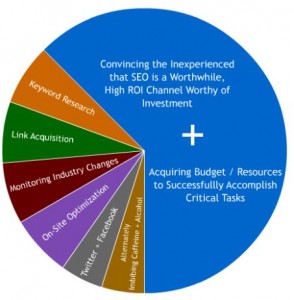
from http://www.seomoz.org/blog/4-essential-seo-infographics, September 2011
Link value or link juice is a term often used in Search Engine Optimization and refers to the amount of value that the search engines like Google attribute to a website or link. Link juice is assigned to web pages and is dispersed throughout a website based on how well your website is optimized. The more links and most importantly the more high quality links a website has directly translates into the more link juice a website is likely to have.
When talking about Links it is important to understand some important fundamentals. Total links quantity indicates the total number of links that your website or webpage possesses. The merit of these links can vary which brings us to the linking source. The linking source describes who is linking to your content and how credible or trustworthy they are. The sites that have a higher rank will pass on more value than those with a lower web rank. Even though the websites with a higher rank may provide more value it is also important to have diversity among your links. It’s ok to have links from lower ranked pages as long as there is a balance between link values.
Another major factor with links is anchor text. The anchor text is the keywords and descriptions other websites use when linking to your content. Accurate anchor text is essential for good SEO. You want something that describes your content well and not something like “Click… Read the rest
Tags: anchor text, backlinks, content, infographics, link juice, link value, linkbait, Links, seo, seo infographics
Posted in Backlinks, Internet Marketing, Search Engine Optimization SEO, Social Media Marketing | No Comments »
Wednesday, August 3rd, 2011
Most people can agree that social media has drastically changed the way businesses perform online marketing. Social media sites like Facebook and Twitter have provided businesses with the resources to create detailed portfolios and interact freely with their customers. Some companies even believe that Search Engine Optimization (SEO) is no longer important and social media should be their main focus.
Does SEO still matter? Social media sites have done a great job of connecting businesses with customers. However even with all the advantages that social media has to offer it shouldn’t replace SEO. Instead social media websites should be thought of as a complement to SEO rather than its substitute.
There are many benefits to using social media like attracting new clients, staying in contact with clients, and the ability to build a positive reputation. It’s clear that due to its popularity social media has begun to push other key SEO elements into the background but that doesn’t mean those elements are not still important. As important as Social media is it remains only one portion of the SEO puzzle. The following is a list of reasons why SEO still matters.
1. SEO Finds The People That Want to Find You!
Social networking will put you in front of other social media users but that doesn’t mean they are customers. With SEO you have a better chance of being found by buyers. Social media is often used to communicate with users that are already part of your circle whereas SEO can be used to draw in users to your circle.
2. SEO Provides More Relevance to Customers!
Social media can increase awareness of your company but with Search Engine Optimization you can specifically target customers seeking your product or service. SEO helps you rank for relevant searches which increases the chance of conversion. Additionally each keyword can be optimized to target a different group of consumers.
3. SEO Enhances The Conversion Process!
As mentioned, SEO focuses more on increasing the chances of conversion. SEO focuses on streamlining the conversion process. Every step… Read the rest
Tags: Internet Marketing, marketing, media, search engine optimization, seo, social, Social Media
Posted in Internet Marketing, Search Engine Optimization SEO, Social Media Marketing | No Comments »
Thursday, July 7th, 2011
YouTube is a video sharing site that works similar to a video search engine. YouTube differs from a video search engine because it does not utilize crawlers to search the internet for videos. Instead, YouTube relies on users to upload their own video files. Like most social media sites YouTube is a great resource for free marketing. Anyone with an account can upload a YouTube video, the real goal is to increase your presence and offer value or entertainment to the other users. The following tips focus on the various aspects of YouTube video optimization and are designed to increase your YouTube marketing efforts.

from http://www.youtube.com/ July 2011
Increasing Search Success:
Similar to Search Engine Optimization, one of your objectives is to use terms that your customers are searching for. Using the same words or phrases that are being searched for will make your video much easier to locate. Although they are not specifically designed for YouTube, some of the same tools used for SEO keyword research can also help generate some popular video search terms. With any marketing the step of selecting the right trigger words is vital either with or without the help of a keyword tool.
When it comes to keyword research and competitive analysis users can also gather information in a number of other ways. For example when performing a search on YouTube you can begin your research by paying attention to the auto suggestions that appear when typing. The auto suggestions identify the terms that other users have recently searched for that relate to your video’s topic. Gathering search patterns surrounding your topic enables you to target your audience more appropriately and will guide more traffic to your content. In addition to the search suggestions, YouTube also provides a list of related terms. Along with the related videos and search suggestion a marketer can also take cues from their competition. Performing competitive analysis by viewing the most popular videos on your subject is a sure fire way to generate new ideas… Read the rest
Tags: Internet Marketing, marketing, Video, video optimization, YouTube, YouTube advertising, YouTube video
Posted in Internet Marketing, Social Media Marketing | No Comments »
Wednesday, June 29th, 2011
On Tuesday June 28, 2011 Google announced that they are very close to launching their new social network called Google +. Not to be confused with Google +1, the new Google + is a social network that is currently in a “field trial period” with a limited number of testers. Although there is no news available regarding the interaction between Google +1 and Google +, it seems logical that eventually the two Google services will somehow be used to complement one another. The goal of Google + is to bring more humanity or emotion to the world of online sharing and interaction.
The foundation of Google’s social network feels similar to other social networking sites like Facebook and Twitter. From the looks of it, Google + appears to incorporate the basics of social networking that we have grown comfortable with and even manages to offer a few unique and innovative features. Users can expect the following features to be included on the Google + Social Networking website following the trial testing period.
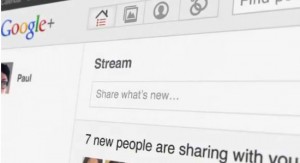
from http://www.google.com/intl/en/+/learnmore/, June 2011
+ Profile:
Creating a Google + Profile is similar to a Facebook profile. The profile enables users to fill in a bio, contact info, interests, upload photos, and link to other sites that they have created. This profile lets users remain in control by specifying who has access to their information and how much of their information is visible. The post tab located on the profile page also contains a record of all the posts made by the users. It’s important to mention that changing a Google + profile name will also change the name associated with your Google account and other Google services.
+ Circles:
Sharing on social networking should be more selective. In most cases the things you tell people depend on the type of relationship. It’s unlikely that you would share the same information with your friends and family as you would with co-workers or… Read the rest
Tags: Google, Google + circles, Google's social network, social network, social networking
Posted in Social Networking | 1 Comment »
Wednesday, June 8th, 2011
Back in March Google began rolling out their +1 feature locally on their Google results page. The new feature enables users to activate the Plus 1 button when they wanted to recommend a website to other users. Since Facebook did not want to have their Like Button located on the Google search results page and chose to showcase it on Bing instead, Google has taken action and created its own way to boost social interaction. Similar to the Facebook Like Button, the plus 1 feature lets users put their stamp of approval on a website.
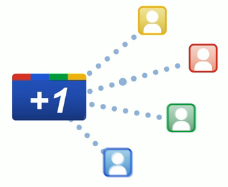
From http://www.google.com/+1/button/, June 2011
Exactly one week ago on June 1, 2011 Google announced that they are now offering the +1 button to website developers to place on their own content. On the day of the announcement the +1 buttons started appearing on major websites like Bestbuy.com, TheHuffingtonPost.com, and Nordstrom.com. After only a week the button now appears on large and small websites all across the Internet. Websites can display the button and enable people to recommend their website, blog or even individual products. Already the Google +1 feature seems to have a solid foundation but it continues to work towards being as widely used as its Facebook counterpart. From what we can tell here at Internet Beacon, the Google +1 button is being used frequently on the search results page but doesn’t quite yet have the exposure necessary to properly compete with the Facebook and Twitter sharing buttons that are on individual websites. In time this could change drastically, after all the button is only a week old.
It makes sense that Google would eventually assign some sort of values to this feature where the more plus ones a website has would equal a rank better, however it is still unclear how this development will affect SEO and the Google website ranking algorithm. Google could determine that sites who… Read the rest
Tags: +1, Google, Google Plus 1, search engine, Search Results, seo, social networking
Posted in Search Engine Optimization SEO, Search Engines, Social Networking | No Comments »
Wednesday, May 25th, 2011
Like most Internet based companies, Facebook continues to take steps to ensure the safety of its users. Even with all the effort made by Facebook, no amount of Facebook security protocols will eliminate every scam and every hacker. Vulnerabilities will still persist regardless which is why the best protection seems to depend on user awareness. The majority of problem reports can most likely be avoided through proper user education. If users remain unaware of the current scams it leaves them unsuspecting and prime targets for malicious scams. Educating users to be aware the attacks while participating on social networking platforms could drastically help preserve the network integrity.
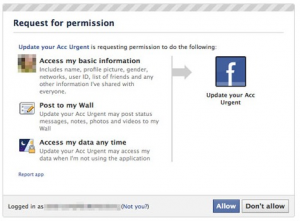
From http://www.Facebook.com, May 2011
The following are the top 4 Facebook scams that continue to plague user experience. These examples show that although Facebook is proactively implementing security precautions, flaws in their security remain. Once problems are identified Facebook should place a greater effort on expressing their concerns and warnings to the users rather than letting their users discover the problem first hand. Even though many users may have heard of these scams it was probably not directly from Facebook but instead from other websites blogs or from other users. For those of you that are hearing about them for the first time due to Facebook’s inability to properly educate the following 4 are the most prominent scams on Facebook today.
Click Hijacking:
For some, these messages may immediately appear to be scams but sometimes the offer is too enticing to refuse. Clickjacking calls for a user to copy and paste text into their browser search bar which infects the computer with malicious code. After a user unintentionally infects their computer the Clickjacker can use that account to distribute spam. Instead of Facebook identifying these types of messages and sending out a notice to users they leave it to the user to find out about it first-hand.
One example of Clickjacking is when a user receives a post from their friend… Read the rest
Tags: Facebook, fraud, malicious content, scam, social network, spam, spam content, Users
Posted in Facebook, Social Media Marketing, Social Networking | No Comments »
Friday, May 20th, 2011
It is common for competing companies to bash one another to gain the competitive edge that they need, however in the most recent case Facebook’s attempt was a huge failure that only hurt their own credibility. Using Twitter, a well known Google critic posted that a public relations firm had requested to add his name on an anti-Google article that they had ghost written. Following this post USA Today also confirmed that they had received a similar request.

Public relations firm Burson-Marstellar who has been representing corporate clients for 58 years was hired to encourage various media outlets to examine Google’s privacy practices. It was unbeknownst that Facebook was the one behind the secret smear campaign with many users initially thinking that it was Microsoft or Apple who was responsible. Once the secret campaign went public it was discovered that Facebook had been the one pulling the strings. This discovery was not only damaging to Facebook but to the integrity of the PR firm Burson-Marstellar as well.
Why did Facebook resort to this desperate attempt to smear Google’s name? It basically comes down to money and although Facebook would seem to be at the top of their game, Google is following closely. Before going awry, Facebook was trying to gain a larger lead against Google. The failed attempt has left both Facebook and BM frantic and eager to regain their ground. Some individuals may expect these kinds of dirty tactics as a regular part of business competition but for a company that emphasizes trusts and privacy like Facebook this backfire is greatly damaging to their reputation. Whisper campaigns like this take place all the time in business and political cases but most the time they do not end with the desperate company becoming the headline. This occurrence has left both Facebook and the PR firm Burson-Marstellar with diminished trust amongst their industries and customers.
Facebook maintains that it was not their intention to smear the competition… Read the rest
Tags: burson-marstellar, Facebook, Google, media, privacy policy, public, smear campaign
Posted in Facebook, Social Media Marketing, Social Networking | No Comments »
Friday, May 6th, 2011
April was a big month for Facebook, among some of the changes that they implemented were new security tools, Facebook Deals, and the Facebook Send button. Each of the new features was designed to provide users with a safe and beneficial user experience.

The first of the three features that Facebook released was a New Suite of Safety Tools. The new security provides users with additional information for user and family safety. In addition to the existing safety content the new resources include articles and videos on Facebook security and privacy. Along with the new safety content users will now be able to use social reporting tools to express to the community what items they do not like or find offensive. Another part of the new security features is two factor authentications. Two factor authentications are used to further prevent unauthorized users from accessing other user accounts. This protection procedure requires a secondary code when logging in from an unrecognized device or location. The last announced security update for Facebook is the option for users to access Facebook using a secure connection over HTTPS. However, because some apps do not accommodate HTTPS Facebook will need to automatically switch between HTTP and HTTPS given the user’s authorization.
Following the implementation of their new security, Facebook also launched Deals on Facebook. Deals on Facebook is currently being tested and is only offered in certain areas like Atlanta, Dallas, Austin, San Diego, San Francisco (many more to follow shortly). This feature lets Facebook users locate deals from local businesses, share, and coordinate plans with other Facebook users. Deals on Facebook will work similar to Groupon and Living Social but are now built right into the social network, which is convenient for both customers and businesses who utilize Facebook.
The latest addition made to Facebook is the “Send” button. This new button is very similar to the “like” button which was introduced last year. The… Read the rest
Tags: Facebook, facebook deals, internet, like button, send button, social networking, Users
Posted in Facebook, Social Media Marketing, Social Networking | No Comments »
Friday, April 8th, 2011
Released to a limited number of users on April 2, 2011 and later expanded for the remaining Google account users, Google +1 has introduced another way for users to recommend websites and share their preferences with the rest of the web.
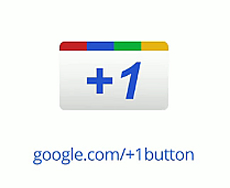
Google +1
from www.google.com/+1/button
April 2011
The Plus One (+1) feature is not an entirely new concept and is very similar to the “Like” button on Facebook. The major difference seems to be the service’s name and the primary platform which it is utilized on. Similar to Facebook, users can use the +1 option to show that they recommend a website, both on Google as well as on the websites that provide the Plus One option through a widget. In order to take advantage of this new feature a user will need to create a Google account.
Once a user establishes a Google account they can begin selecting the +1 option that appears below each of the search results. After a user has placed their stamp of approval on a listing via the Plus One option, it will appear on a new tab in their Google profile. This newly created tab is where a user is able to manage all of the elements that they have chosen to +1. These options include the ability to remove a recommendation and to choose who has the authority to view the items that you have marked as Plus One. The +1 feature enables you to choose whether the +1’s (recommendations) are private, public, or customized to grant permission to specific users.
If a user decides to keep their Plus One item private they will still be added to the number of people who recommend the site however their profile name will remain hidden. For example below a search result it will display “54 people +1’d this” as opposed to their user name plus the number of other people who have chosen the Plus One option. Users will be able to… Read the rest
Tags: Facebook, Google, Google +1, like, search, search engine, search result, user
Posted in Internet Marketing, Search Engines, Social Media Marketing | 1 Comment »
|